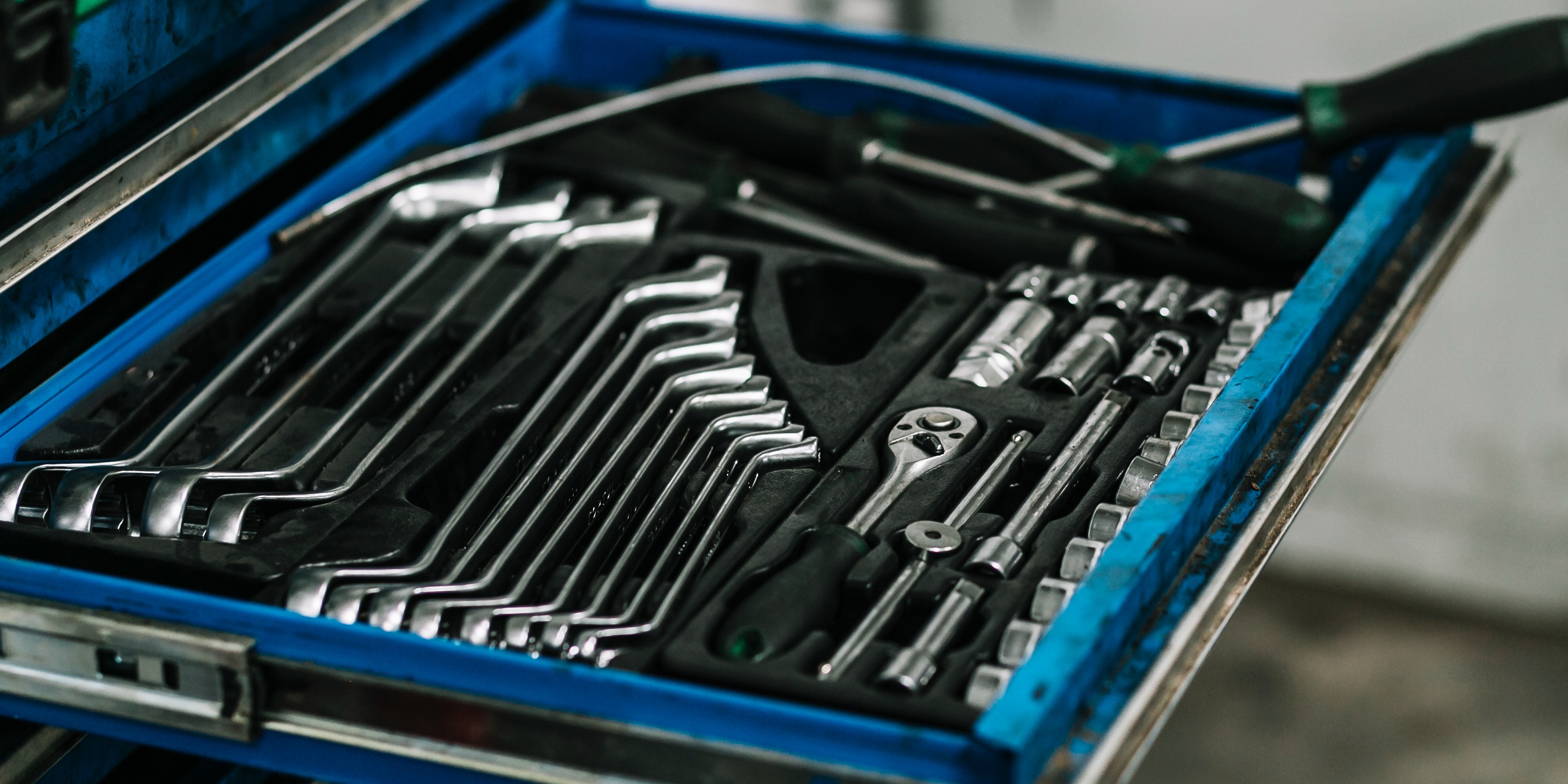
Managing Parts Warranties and Cores in Heavy-Duty Repair
You walk into the back room of your shop and see a pile of greasy turbo cores stacked in the corner. Each one represents $300-$500 you could get back - if they ever make it to your vendor. Multiply that by a few unfiled warranty claims on defective alternators or injectors, and suddenly thousands of dollars are leaking out of your margins every month.
For independent and mid-sized heavy-duty shops, mishandling parts warranties and cores is one of the most common (and costly) blind spots. It drains profit, wastes admin hours, and erodes customer trust. But with the right processes - and the right tools - you can turn warranty jobs and old parts into cash, efficiency, and loyalty.
This guide breaks down best practices for warranty returns and core management, and shows how modern SaaS platforms like ShopView help shops plug profit leaks and boost productivity.
Why Warranties and Cores Matter
Dollars Left on the Table
Inventory and parts make up about half of a repair shop’s business. Ignore them, and you’re bleeding money. A single unreturned diesel core can cost $200-$1,000. Forgetting to process a defective part warranty can wipe out the profit from the original job. Over a year, these mistakes can add up to tens of thousands of dollars in lost revenue.
Customer Trust on the Line
When a truck you repaired six months ago breaks down with a failed part, the customer expects you to stand behind your work. If you confidently process the warranty and get them rolling fast, you build loyalty. If you bungle it - or worse, make them chase their own credits - you lose credibility.
Downtime Costs for Clients
Every day a truck is sidelined costs a fleet $450-$760 in lost productivity. Quick warranty turnaround reduces that pain and keeps your shop in their good graces. Likewise, recycling cores feeds the remanufacturing supply chain, lowering part costs for you and your customers.
Bottom line: warranties and cores are not busywork - they’re revenue protection and trust-building strategies.
Best Practices for Warranty Returns
A failed part shouldn’t turn into a shop headache. Here’s how to streamline defective part returns:
1. Track Every Warranty
Log all installed parts with their warranty terms (time, mileage, vendor). Tag them in your work order system so service writers know at a glance if something’s covered. Track claims and review them regularly - if more than 2-3% of jobs come back under warranty, it’s a red flag.
2. Move Fast with Vendors
As soon as a defective part comes off, tag it, log it, and move it to a designated return area. File the vendor’s RMA paperwork immediately. Many suppliers have a 30-90 day return window; missing it means you eat the cost.
3. Prioritize the Customer
Treat warranty jobs like VIP repairs. Assign top techs, expedite scheduling, and communicate clearly: “We’re covering this under warranty and handling it with the vendor.” Often, a smooth warranty experience builds more loyalty than a flawless first repair.
4. Leverage Vendor & Network Warranties
Don’t eat costs unnecessarily. Many OEM parts reimburse both the part and labor for warranty failures. Service networks (like NAPA Truck Service Centers) even cover your customers nationwide while reimbursing you directly.
5. Set Clear Shop Policies
Separate manufacturer warranties from your shop’s guarantee. Many shops default to 12 months/12,000 miles, while some offer 24-month coverage as a differentiator. Publish it on invoices, your website, and in the shop. Transparency prevents disputes.
6. Handle Claims with Grace
Skip the blame game. Confirm coverage, don’t charge the customer, and recover costs from the vendor. Track turnaround times - if credits take too long, you’ll know which vendors to push.
Rule of thumb: Every defective part is cash in limbo. Track it, don’t wing it.
Best Practices for Core Returns
Core charges aren’t spare change - they’re often hundreds per component. Here’s how to keep those credits flowing:
1. Separate the Money
Log core deposits as their own line items. Example:
- Alternator: $500
- Core Charge: $100
If you just log $600, you’ll lose track of that refundable $100.
2. Be Transparent with Customers
Invoice cores separately. If they return the core immediately, credit it right away. If not, leave the deposit on the bill and refund later. This avoids confusion and matches your own vendor process.
3. Quarantine Your Cores
Designate a single “returns zone” - a shelf, bin, or cage - for cores and returns. Separate by vendor, tag everything, and never mix with new stock. A quick glance should show what’s pending.
4. Stick to a Pickup Schedule
Work with vendors to pick up returns weekly or bi-weekly. Always get a return slip and reconcile it against credits monthly. Don’t let parts leave without documentation - otherwise you’re gambling with cash.
5. Train Techs on “Core Awareness”
Make it policy: techs return every core to the parts room immediately. Remind them: “This stuff is money.” Old parts tossed in the yard = lost credits. Same for unused new parts - get them back in inventory.
6. Track Core Inventory Value
Treat dirty cores like inventory. Count them during audits and know their dollar value. Example:
- 3 radiator cores @ $90 = $270
- 2 DPF cores @ $500 = $1,000
That’s $1,270 in potential credits sitting in your cage.
The shops with the best processes hit near 100% return rates - and it shows on their bottom line.
How Software Simplifies Warranties & Cores
Manual logs and spreadsheets work…until they don’t. Modern shop software automates the process, ensuring no credit slips through.
- Digital Tags & Alerts - ShopView lets you flag parts with warranty info or core charges in the work order. The system auto-adds deposits, tracks expirations, and reminds staff of pending returns.
- Faster Claims - Searchable histories mean you can instantly find when/where a part was purchased and submit claims faster. Shops save up to 1.5 hours per tech per day just by eliminating paperwork.
- Core Tracking Modules - Track dirty core inventory, dollar values, and vendor returns in one dashboard. Reports show what’s pending, overdue, or credited.
- Telematics & DVIR Integration - Spot issues early through Samsara or Geotab fault codes and driver inspection reports. If a part under warranty shows trouble, you can act proactively.
- Multi-Location Visibility - For growing shops, warranty and core data sync across all branches. No more “was this turbo installed at the other location?” confusion.
With ShopView, warranties and cores aren’t headaches - they’re streamlined into your daily workflow.
ROI: Why This Matters
- Revenue Recovered: Even small shops recover $100K+ annually in missed credits and unbilled work after tightening returns.
- Labor Saved: 1.5 hours/day per tech = 15 extra hours in a 10-tech shop. That’s ~$5,000/week in billable potential.
- Cash Flow Boost: Faster core returns mean less cash tied up in deposits.
- Customer Loyalty: Hassle-free warranties and clear communication keep fleets coming back. A 5% increase in retention can lift profits by 25-95%.
Conclusion: Stop Leaking Money, Start Building Trust
Managing warranties and cores may not be glamorous, but it’s a profit driver. Done right, it protects your margins, builds customer trust, and keeps your shop running lean. Done poorly, it bleeds cash and credibility.
The good news? With disciplined processes and a platform like ShopView, you can tighten up overnight.
👉 Ready to stop leaving money on the table?
Book a free demo of ShopView today and see how easy it is to track warranties, manage cores, and boost your profit per bay.
.png?width=1500&height=1500&name=11%20(1).png)








.png?width=1500&height=1500&name=1%20(1).png)

%20-%20Copy.png?width=1500&height=1500&name=2%20(1)%20-%20Copy.png)



